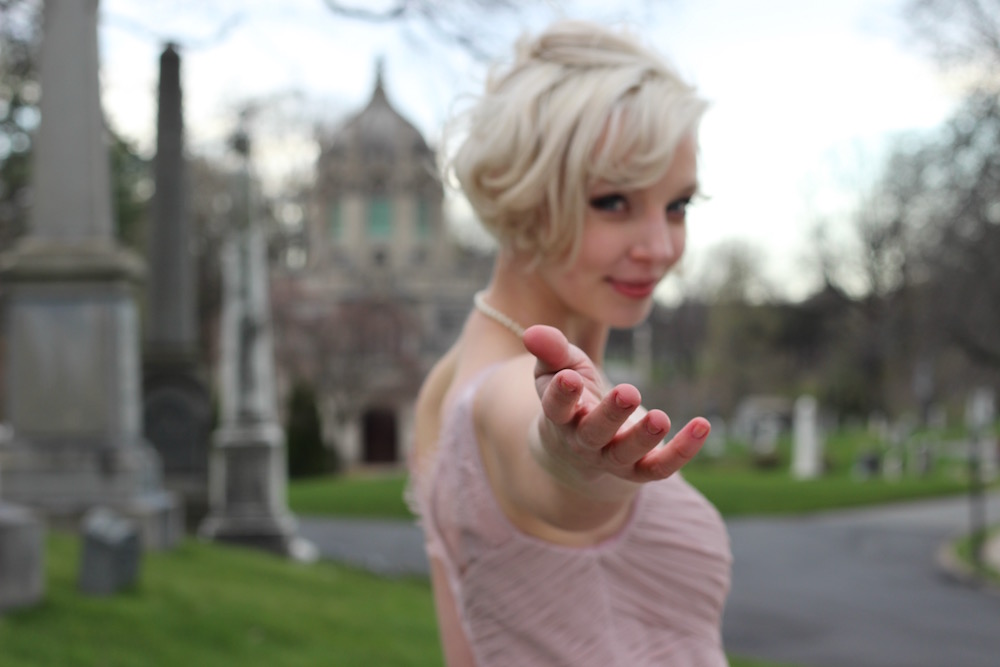
America is divided.
Cremations are up, burials are down, and one group of people appears to be running from cemeteries as fast as they can, moving toward home burials, and innovative niches in skyscraper columbarium or woodsy green burials.
The other group is running for the cemeteries, in an effort to revitalize them, and reimagine them, and re-remember the history and natural bounty that they hold. And for that second group of people, a highlight event has become cemetery theater.
Last year in Oregon, the Portland Actors Ensemble staged the Shakespeare play, Troilus and Cressida, in the city’s Lone Fir Cemetery—“It’s a fittingly sepulchral setting for William Shakespeare,” wrote one reviewer, and “a play defined by death, betrayal and characters who hunger for love they’ll never receive.”
In Hawaii, the Cemetery Pupu Theatre annually performs a series of historical skits around tombstones of prominent Hawaii individuals inside the Oahu Cemetery and Crematory. Before the show in the 175-year-old cemetery, guests are treated to appetizers. A similar event happens at the Glens Falls Cemetery, in Glens Falls, New York, where local historical figures—now dwelling in the cemetery—are brought to life through theater.
Earlier this year the Mount Auburn Cemetery, in Cambridge, Massachusetts, appointed their first artist-in-residence, a dramatist named Patrick Gabridge. “I hope visitors will gain a new understanding and connection through these plays, while experiencing the beautiful landscape in a truly unique way,’’ said Gabridge.
Last year in Philadelphia, the Laurel Hill Cemetery was “transformed,” according to an article in DCMetroTheaterArts.com, “into a surreal and hallucinatory place with a chandelier hanging in a tree and an old tombstone turned into a royal bed” for a production of the REV Theatre Company’s showing of Shakespeare’s Hamlet.
One of the most famous cemetery’s for theater is New York City’s Green-Wood Cemetery, which was founded in 1838, one of the first “rural” cemeteries in America. The cemetery has more than half a million permanent residents, in graves and crypts that are set amidst a rolling landscape of woods and dales. It’s “a gorgeous, massive, darkly idyllic space, filled with an endless array of statues and mausoleums, marble and granite, ponds and paths,” read a review of a 2016 play that occurred at Green-Wood and was put on by the Great American Casket Company.
The aim of this innovative and immersive theater production was to get the audience to ponder some of life’s more mortal questions. “The company’s stated objective is to sell caskets, as well as all manner of afterlife-appropriate accouterments, to you, the beloved client,” reads a review about the production in Brooklyn Magazine. “But along they way their role seems to shift and grow. Do they want to teach you how to live a good life? Do they want you to learn to find peace in death? Do they want you to confront your fears, or are they in need of ways to confront their own? Do they have the answers to the mysteries of life and death, or are they just as blind and hopeful as the rest of us? As you follow the company around the cemetery grounds, it’s impossible not to ask yourself some of these questions.”
This seems like the best any cemetery theater can ask for, a theatrical experience that both physically and mentally brings the audience toward the world of the dead.
The Green-Wood Cemetery is at the heart of the cemetery theater movement. Last year the popular travel website Atlas Obscura held an event of their Into the Veil series there. “Vaults will creak open, glasses will be raised, and memories that last a lifetime will be made,” read a flier for the event. “Attendees both new and returning will find their own unique experiences, weaving together stories from the 560,000 lives interred across Green-Wood’s historic 478 acres. Navigating below the silhouettes of thousands of starlit trees, let your curiosity lead you through winding pathways, revealing hidden spaces of music, history, and storytelling.”
Interestingly enough, Green-Wood has long attracted visitors. “By the early 1860s, it had earned an international reputation for its magnificent beauty and became the prestigious place to be buried, attracting 500,000 visitors a year, second only to Niagara Falls as the nation’s greatest tourist attraction,” the website for the cemetery reads. “Crowds flocked there to enjoy family outings, carriage rides, and sculpture viewing in the finest of first generation American landscapes. Green-Wood’s popularity helped inspire the creation of public parks, including New York City’s Central and Prospect Parks.”
Modern times have become, shall we say, a bit more hip. Last year’s Green-Wood event featured a bar set amidst the tombs, with beer, wine, craft cocktails and “cemetery ciders.” For $150 a ticket, attendees could enjoy the VIP experience.
This year Atlas Obscura held their Into the Veil event at the Graceland Cemetery, in Chicago. “Chase a single flickering light or follow the distant sound of a bell deep into the hallowed grounds,” the promo read. “With only your curiosity to guide you, you’ll wander the cemetery’s candlelit pathways to find dozens of intimate experiences hidden among the mausoleums, crypts, and headstones… stumble on incredible performances and installations in unexpected environments.”
As Rudy Caporaso, one of the producers behind the Hamlet production that took place last year in Philadelphia’s Laurel Hill Cemetery told interviewers, “I actually don’t think of the cemetery as ghoulish. To me, it is a place of beautiful mystery and the perfect place to contemplate life and death — and the not-so-great divide between the two.”
“A cemetery is such a charged space, one that is simultaneously a tremendous opportunity and challenge for storytelling,” says Andrew Lynch, a member of Bread Arts, the ten-member theater collective responsible for the Great American Casket Company show in the Green-Wood Cemetery. “It’s a place of deep emotion and contemplation that confronts an audience with their own mortality.”
And in these contentious and divisive times, cemeteries have another bonus: they are the one thing that unites America.









